The human body is constantly exposed to external dangers. This is another disease, infection, etc. Parasites are one of the most common and serious problems. They did not notice the entry into the human body at all, and the consequences could be very serious. It is important to know which parasites in the human body are the most dangerous, and what are the health threats they cause. You can see the parasites in detail in the photos.
There are various kinds of worms living all over the world, and they are divided according to the mode and type of transmission. Parasitic worms are mainly transmitted to humans in the following ways:
- Infected;
- Animals;
- Soil, food, water;
- was bitten by an insect.
There are several types of worms:
- Liar;
- round;
- Tape.
Worms are a large class of parasitic worms that live in plants, animals and humans. They can live in hollow organs, thicker tissues, and the tissue itself.
The ten most dangerous parasites in the human body
- Schistosoma is a dangerous parasite in tropical waters.
- Rishta is a worm that lives under human skin.
- Filaria is a dangerous parasite of elephantiasis.
- Echinococcus is a dangerous larva in the body.
- Vandellia whiskers are parasites of fish.
- Worms are known to all worms.
- The cow tapeworm is a very large and long worm.
- Hemangiomas are small harmful worms.
- Wide tapeworm-harm to human intestines.
- Pork tapeworm is a dangerous disease.
Schistosoma-lives in venous blood
The second name of the parasite is vampire. Infection occurs through skin contact with contaminated water. The disease caused by schistosomiasis is called schistosomiasis.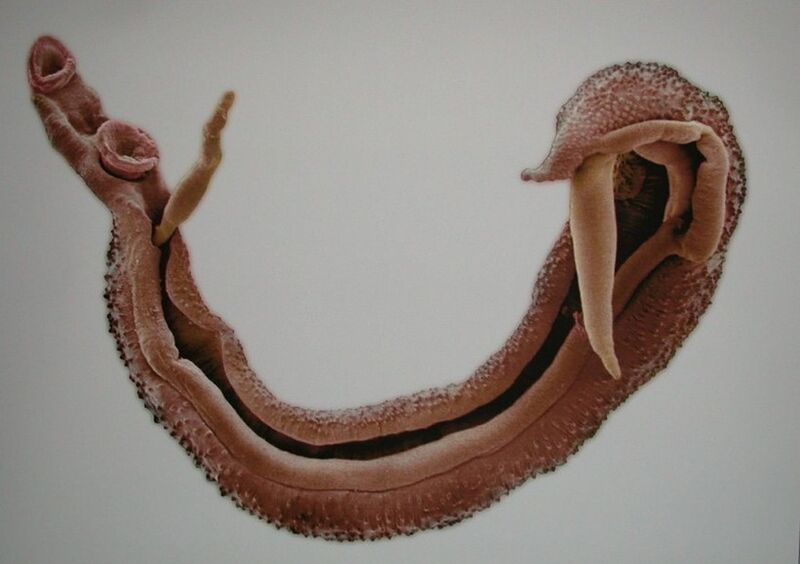 They are different from other worms in their habitat: they live and reproduce in the venous system. It is most commonly found in South America, Africa, the Middle East, and Southeast Asia. They are not large in size, with a length of 2. 6 cm and a diameter of 0. 6 mm, which are clearly visible in the photo. A person realizes that he has the following symptoms:
They are different from other worms in their habitat: they live and reproduce in the venous system. It is most commonly found in South America, Africa, the Middle East, and Southeast Asia. They are not large in size, with a length of 2. 6 cm and a diameter of 0. 6 mm, which are clearly visible in the photo. A person realizes that he has the following symptoms:
- Enteropathy;
- Swollen lymph nodes, spleen.
But the symptoms are different, it all depends on the body part where schistosomiasis accumulate:
- Nervous system-disorientation, memory loss, headache;
- Bladder-organ inflammation, blood in urine, abdominal pain;
- Liver-ascites, enlarged organs, spleen;
- Intestines-diarrhea, polyps.
Worm eggs are very dangerous and will pierce and destroy the lymphatic and blood vessel walls of various organs and tissues. In this way, the parasite can even enter the uterus, lungs, prostate and stomach. Worms and eggs can block blood vessels, leading to the formation of varicose veins, tumors, and cysts. This worm can cause serious problems, including bladder cancer, liver cancer, prostate cancer, and liver fibrosis. In order to avoid infecting the human body with the most dangerous parasites, it is very important to avoid swimming in tropical waters and wash vegetables, fruits and hands before eating. If treatment is started on time, schistosomiasis can be cured conservatively. If complications occur, surgery is performed.
Rishta-Subcutaneous Worm
Dracunculiasis is a disease caused by this type of parasite in the human body. The infection occurs through dirty water in tropical reservoirs in Asia and Africa. Normally, humans are infected, but dogs are also infected.
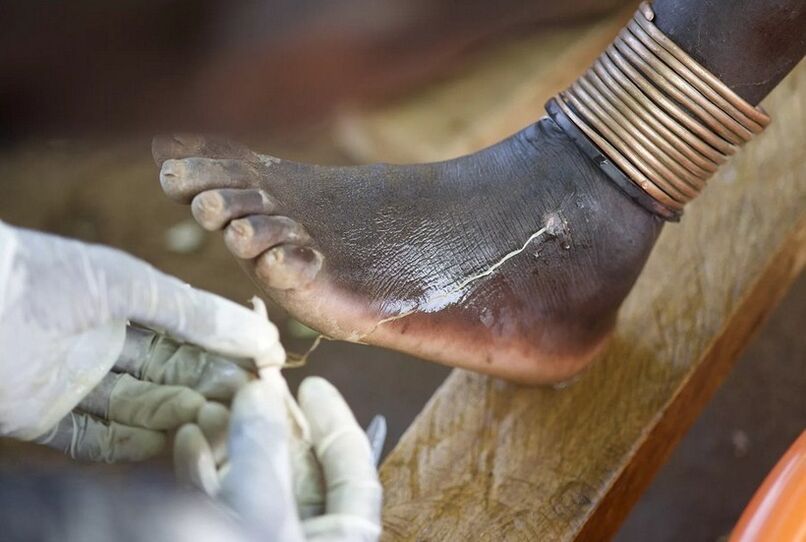
When swallowing the contaminated water of Copod, the worm will enter the human body, which is the carrier of the larvae of Liszta. It can only be treated by surgery. Secondary infections of already injured skin are very dangerous.
Once in the human body, Lista will bite the tissues, the intestinal wall, and live in the lymphatic vessels and subcutaneous fat. In length, worms can grow up to 80 cm. There will be a strong abscess on the part of the body where Lishta is located, and parasites will be found in the body. The disease is only caused by females, and males die after mating. When the infected skin area comes into contact with water, the female worm will leave a short distance and throw its larva into the water. These larvae must be caught by the co-foot crayfish to survive.
Filaria is a very dangerous parasite to the human body
Another name for worms is filamentous. Among all species, about 10 prefer humans, which leads to filariasis. They are called threads because of their appearance. Worms are very thin, just like threads, which can be seen in the photo. The diameter is 0. 3 cm, but they grow very large, reaching a maximum of 50 cm or more. After hitting the body, they live in subcutaneous tissue, body cavity, heart, blood, lymphatic vessels, and any part of the body. It is very common in hot countries.
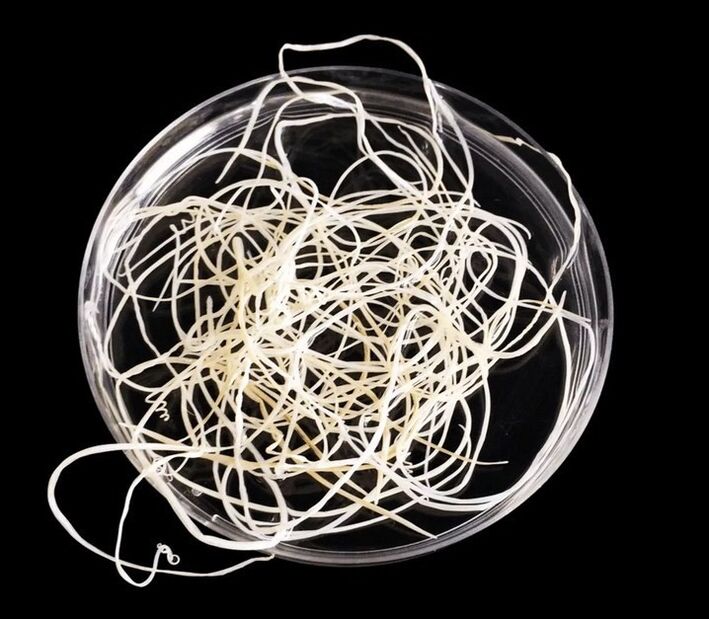
They are spread by blood-sucking insects (sometimes ticks), which in turn infect the blood of infected animals and humans. The danger is that when the disease becomes chronic, the most terrifying worms can be detected, which is almost impossible to cure. The accumulation of silk can block the lymphatic system, block the blood vessels, and cause elephantiasis. The patient’s legs became enlarged and swollen so much that they could not move. There are many pictures of people with this disease on the Internet.
Echinococcus oc is a great danger to humans and animals
This tapeworm lives in the intestines of dogs, wolves, and rarely cats, and is easily transmitted to humans.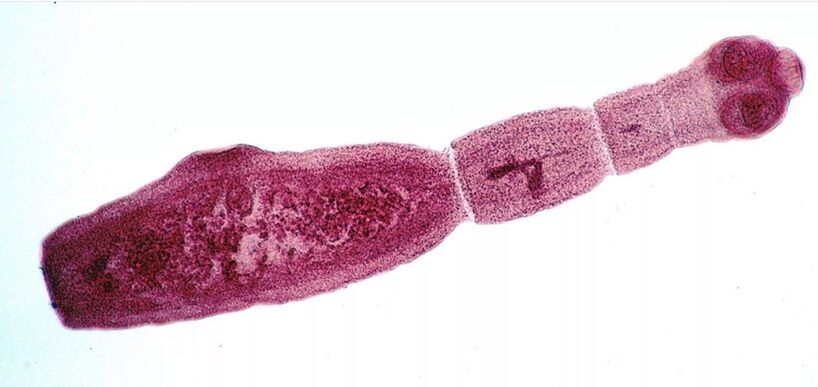 Echinococcus larvae are the most dangerous and cause echinococcosis. An adult worm is 3 to 5 millimeters long. In the photo depicting the parasite, you can clearly see suckers, hooks, and wire segments on its head. Eggs are excreted from the dog, excreted with the feces, and sometimes stick to the wool.
Echinococcus larvae are the most dangerous and cause echinococcosis. An adult worm is 3 to 5 millimeters long. In the photo depicting the parasite, you can clearly see suckers, hooks, and wire segments on its head. Eggs are excreted from the dog, excreted with the feces, and sometimes stick to the wool.
Livestock can also be infected. Humans eat contaminated meat through the mouth, and dog saliva becomes infected. The larva enters the liver through the blood, lives and reproduces in it, and further penetrates into the body. It rarely enters the bones, muscles, and lungs. During the development process, Echinococcus worms will turn into large bubbles, about the size of a child's head. According to the neglect of the disease, it can be treated with medicine or quickly by removing air bubbles from organs and larvae.
Whiskers Vandellia-the smallest and most terrifying
Usually, this creature is a fish, but it is one of the most dangerous creatures to the human body. People worry about her because when taking a bath, the almost transparent, 15 cm long creatures can easily penetrate the urethra, genitals and anus. Vandelia then attaches to the blood vessels and feeds on blood. Unfortunately, the only way to get rid of the parasites is through surgery.
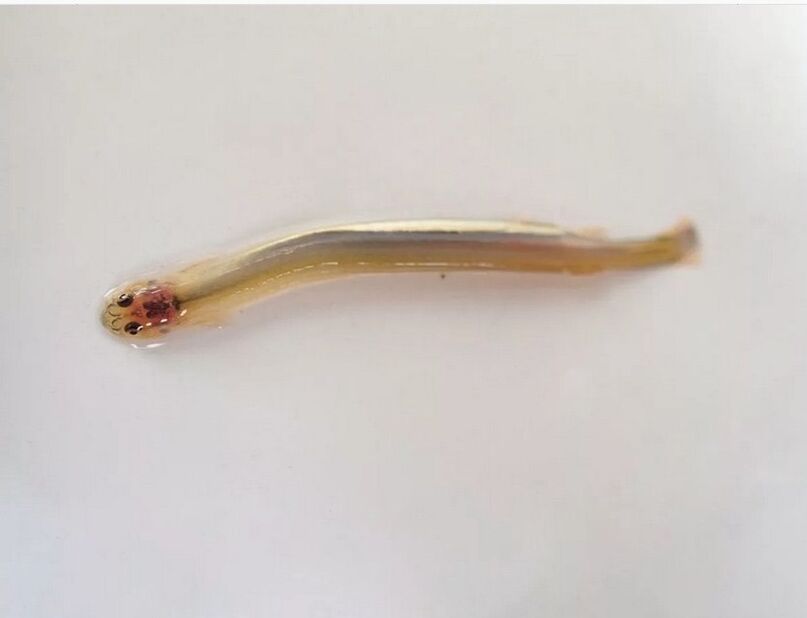
scarworm-the most famous worm on the human body
Parasites are widely distributed and are usually found in the human body. If the eggs of human roundworms fall into the soil, they can stay in the soil for nearly a year until they migrate to a favorable environment. In the body, it releases toxins that affect the liver and lungs. The worm does not stop in one place, but constantly passes through the body, affecting blood vessels and causing inflammation.
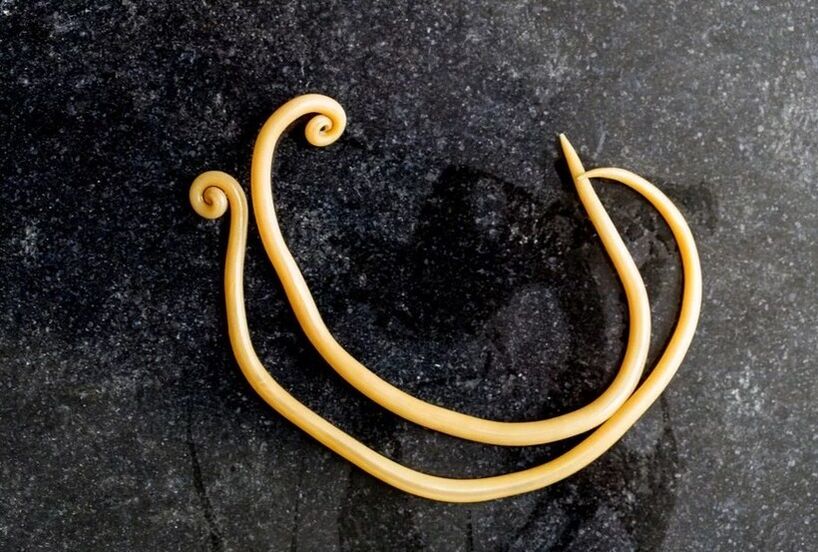
The main living place of the most harmful worms is the intestines, where the parasites lead a comfortable life and eat the food that the infected person eats. They can enter the pancreas, bile, liver, reach the esophagus and obstruct breathing. A roundworm lays up to 1, 000 eggs per day. They grow very large, up to 30 cm.
Bull tapeworm is the largest and most dangerous worm
This very large parasite lives in the small intestine, and the photos of the worm are simply amazing. The body of the worm consists of a head with a suction cup. The segment has many segments, ranging in number from 2, 000 to 5, 000. The length of the worm increases as it grows until it reaches 10 meters. In the human body, if left untreated, it can survive for up to 20 years. It produces about 600 million eggs every year, with up to 11 billion eggs per life cycle.
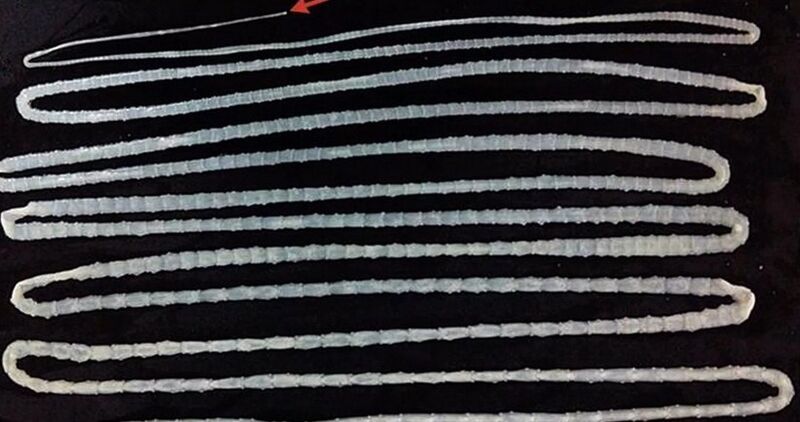
Lives only in the small intestine of animals (humans). The intermediate host of infected persons is cattle. Infections are caused by poor processing, cooked or raw meat, milk, fish, and contact with pets.
Hookworm-a harmful and dangerous worm
This worm is very common in East Asia in Africa and causes hookworm disease. The parasite lives in the duodenum and does not grow up to a maximum of 14 mm. The infection is carried out through dirty hands, vegetables, fruits, and even through the skin when dealing with the soil. When walking barefoot on the grass, the larvae can penetrate into the skin.
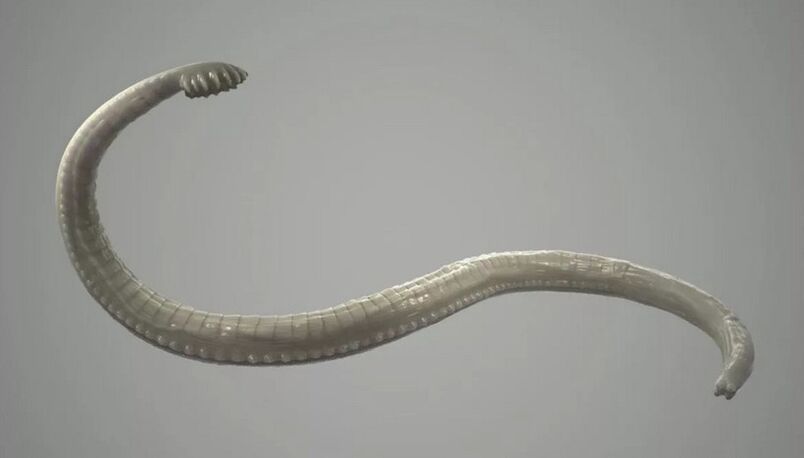
Once it enters the body, it enters the blood vessels, and from there it enters the liver, heart, and lungs. Ankylosing foot disease can cause serious complications, especially hepatitis and ulcers.
Wide ribbon-a dangerous parasite with a large body
If a person eats raw, uncooked fish, raw pike caviar or is engaged in the processing of infected fish, seafood, the worm is infected by the fish.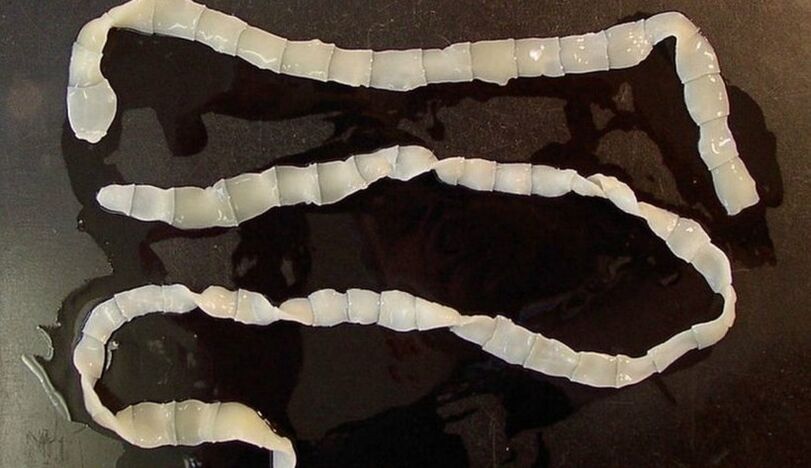 The dangerous worm grows to 15 meters and is very large. The body is made up of many parts-up to 4, 000. There are suction cups on the head, and the worm is connected to the intestine through the suction cup. Looking at the photos of the worm, it is hard to believe that it can live in a person. The larvae develop in just one month. The wide worms can cause a serious disease-dilobate flagellosis.
The dangerous worm grows to 15 meters and is very large. The body is made up of many parts-up to 4, 000. There are suction cups on the head, and the worm is connected to the intestine through the suction cup. Looking at the photos of the worm, it is hard to believe that it can live in a person. The larvae develop in just one month. The wide worms can cause a serious disease-dilobate flagellosis.
This patient suffers from a severe vitamin deficiency, because the worms feed on all the nutrients of the human body. All its large objects absorb material on its surface. Where the worm sucked, necrosis began. The most dangerous tapeworm can live in the human body for up to 10 years.
Pork tapeworm is a very harmful worm to the human body
This worm can be confused with the cow tape worm, but it does not grow very large, with a maximum length of 3 meters. There are also fewer knots on the body, up to 1, 000. The worm has a sucker on its head and a proboscis with a hook. Therefore, the worm attaches to the intestinal wall. It takes root in the bodies of pigs, rabbits, hares, dogs, and camels, and through it reaches people-the ultimate owner. It is allowed to use raw bacon and meat for infection. It is very dangerous for the egg to enter the human body because it becomes the middle owner, so the Finn stage will occur in it, which usually leads to the most serious illnesses and deaths.

Helminthiasis causes cysticercosis and tendon sheath disease. If there are a lot of parasites, they will block the intestines. Therefore, the patient needs to be operated on urgently. They can pierce the intestinal wall, enter the lymphatic vessels, and enter internal organs. Complications of the disease can cause damage to the subcutaneous tissues, muscles, skin, spinal cord, brain, bones and internal organs. The most important thing is to take precautions and handle the meat carefully before eating. One must pay attention to personal hygiene and prevent helminthiasis.






































